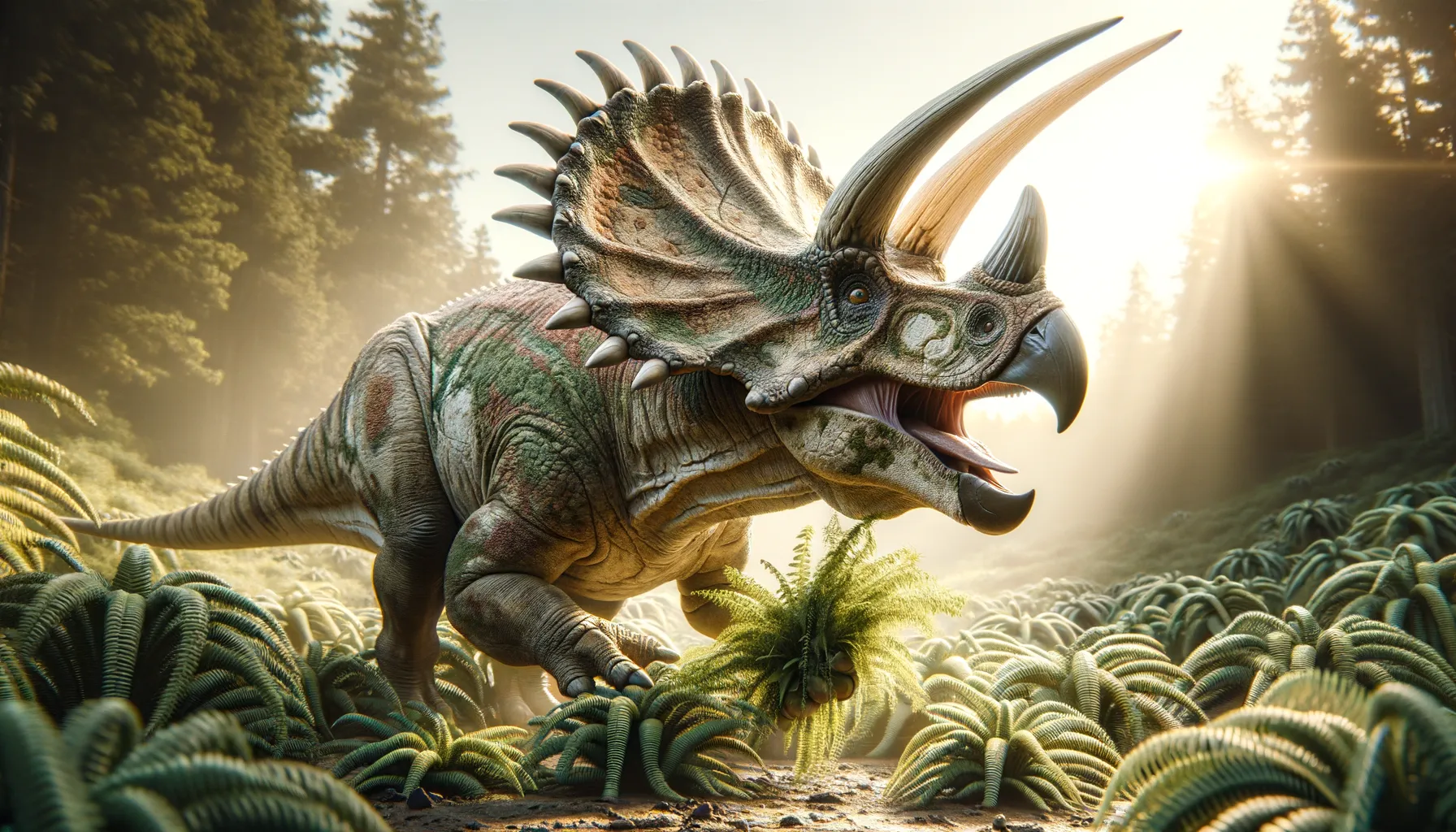
Eoceratops
Majestic horns of the prehistoric world.
Period
Cretaceous
Length
Around 6 meters from head to tail.
Height
Roughly 2 meters at the shoulder.
Weight
Approximately 2.5 to 3 tons.
Eoceratops was a herbivorous dinosaur from the late Cretaceous period. It belonged to the ceratopsian family, which is known for having ornate horns and frills. This dinosaur roamed the landscapes of North America, using its specialized beak and teeth to feed on tough, fibrous plants. It likely moved in herds, providing protection against predators with its impressive size and formidable headgear.
Diet
Eoceratops was a herbivore, primarily feeding on tough, fibrous plants. It had specialized teeth and a strong beak to process these types of vegetation. Its diet consisted mainly of foliage found in its Cretaceous habitat.
Hunting
As a herbivore, Eoceratops did not engage in hunting behavior. Instead, it foraged for plants and shrubs within its environment. Its herd structure provided safety from predators rather than aggressive hunting tactics.
Environmental challenges
During the late Cretaceous period, Eoceratops faced environmental challenges such as seasonal changes affecting food availability. The landscape it inhabited was full of diverse plant life, requiring adaptations to efficiently find and consume enough sustenance. Additionally, natural predators posed constant threats, requiring Eoceratops to develop social behaviors and physical defenses to survive.
Speed
Slow-moving, due to its large, bulky body.
Lifespan
Estimated to be around 70 to 80 years.
First discovery
Discovered in 1901 by Lawrence Lambe in Canada.
Fun Facts
- Eoceratops was a dinosaur that lived during the Late Cretaceous period, around 80 million years ago.
- It was a member of the ceratopsian family, which includes the famous Triceratops.
- Eoceratops is known for its large frill and horns on its face, which may have been used for defense or attracting mates.
- Fossils of Eoceratops have mainly been found in what is now Alberta, Canada.
- Despite its large size, Eoceratops was a herbivore, feeding on plants and foliage.
- Eoceratops walked on four sturdy legs, allowing it to support its heavy body and large skull.
- The name Eoceratops means 'dawn horned face', reflecting its place as an early member of the horned dinosaurs.
Growth and Development
Eoceratops likely had a fast growth rate in its early years to reach a size large enough to deter predators. Juveniles would have relied on herd protection until reaching maturity. As they developed, their distinctive horns and frills became more pronounced, serving as their primary defense mechanism.
Habitat
Eoceratops lived in what is now known as North America, where its habitat consisted of lush, coniferous forests and open plains. These environments provided ample food sources and space for its large herds. The varied terrain offered both challenges and opportunities for these dinosaurs to thrive.
Interaction with other species
In its ecosystem, Eoceratops likely shared its habitat with both herbivorous and carnivorous species. It would have competed with other herbivores for food resources. Its social structure facilitated interactions within the species, enhancing survival against common predators such as large theropods.
Natural lifespan
Eoceratops likely lived for several decades, possibly up to 70 to 80 years.
Reproduction
Eoceratops is believed to have been oviparous, laying eggs in nests constructed from vegetation. The eggs would have been incubated by environmental heat or, possibly, through limited parental care. Hatchlings were vulnerable and relied heavily on herd protection as they grew.
Social behaviour
Eoceratops displayed strong social behavior, often moving in large herds for protection. These herds helped deter predators and facilitated easier foraging. Social interactions within the herd likely included communication through vocalizations and physical displays using their horns and frills.
Fossil locations
Fossils of Eoceratops have primarily been discovered in Alberta, Canada. These fossil sites provide valuable insights into the diversity of ceratopsians in North America during the late Cretaceous. Ongoing excavations continue to reveal more about the distribution and life of this intriguing dinosaur.
